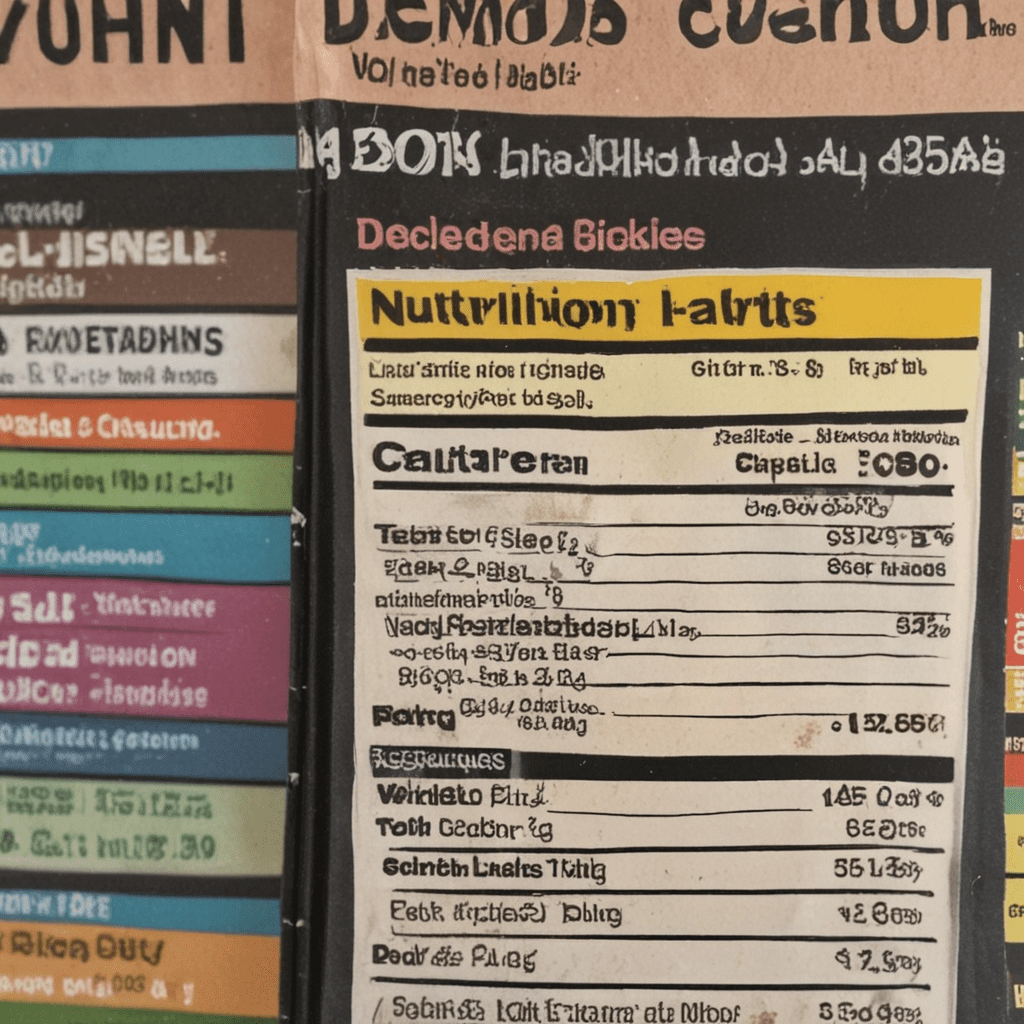
Nutrition Workshops for Kids: Decoding Nutrition Labels
1. Introduction: The Importance of Nutrition Labels
In today's fast-paced world, kids are bombarded with food choices that may not always prioritize their health. Nutrition labels serve as a valuable tool to help children and their parents make informed decisions about the foods they consume. They provide essential information about the nutrient content of packaged foods, empowering kids to take ownership of their health and well-being. By understanding and decoding nutrition labels, kids can learn to make healthier choices and develop lifelong healthy eating habits.
2. Breaking Down Nutrition Labels: Essential Components
Nutrition labels are typically found on the back or side of packaged food items. They consist of several key sections:
- Serving Size: This indicates the recommended amount of food to consume in one serving.
- Calories: This represents the amount of energy provided by one serving of food.
- Nutrients: This section lists essential nutrients, such as total fat, saturated fat, cholesterol, sodium, carbohydrates, fiber, sugar, protein, and vitamins and minerals.
- Percent Daily Value (%DV): This indicates the percentage of the recommended daily intake of a particular nutrient provided by one serving of food.
Understanding these components is crucial for kids to grasp the overall nutritional value of foods.
3. Understanding Serving Sizes: The Key to Accuracy
Serving sizes are a fundamental aspect of nutrition labels. They provide a reference point for comparing the nutrient content of different foods. Misinterpreting serving sizes can lead to inaccurate assumptions about the amount of nutrients consumed.
For example, a nutrition label may indicate that a bag of chips contains 150 calories per serving, but if the serving size is two cups, consuming the entire bag would result in consuming 300 calories instead.
4. Decoding Nutrient Information: Calories, Fats, Carbs
Calories represent the energy content of food. Kids need to understand that not all calories are created equal and that they should focus on consuming nutrient-rich foods that provide sustained energy.
Fats are an essential part of a balanced diet, but it's important to distinguish between healthy fats and unhealthy fats. Saturated and trans fats should be limited, while unsaturated fats, such as those found in olive oil and avocados, are beneficial for heart health.
Carbohydrates provide the body with glucose, its primary source of energy. Complex carbohydrates, such as those found in whole grains, fruits, and vegetables, are preferred over simple carbohydrates, such as those found in sugary drinks and processed foods.
5. The Truth About Sugar: Unveiling Hidden Sugars
Added sugar is a major concern in children's diets. It can contribute to weight gain, tooth decay, and other health problems. Kids need to be aware of hidden sources of sugar in foods like yogurt, granola bars, and fruit juices.
Nutrition labels list the total amount of sugar per serving, but it's important to note that not all sugars are listed as "sugar." Some manufacturers use alternative sweeteners, such as high-fructose corn syrup, which is equally detrimental to health.
6. Spotlight on Sodium: Its Role and Impact
Sodium is an essential mineral that helps regulate fluid balance in the body. However, excessive sodium intake can lead to high blood pressure, which increases the risk of heart disease and stroke. Nutrition labels indicate the amount of sodium per serving, and kids should aim for foods that are low in sodium. Processed foods, such as chips, crackers, and frozen meals, often contain high amounts of sodium.
7. Vitamin and Mineral Powerhouses: Identifying Essential Nutrients
Vitamins and minerals are vital for overall health and well-being. Nutrition labels list the amount of essential vitamins and minerals provided by one serving of food. Kids should focus on consuming foods rich in vitamins A, C, D, E, and K, as well as minerals like calcium, iron, and potassium. Fruits, vegetables, and whole grains are excellent sources of these nutrients.
8. Healthy Choices Made Easy: Using Nutrition Labels as a Guide
Empowering kids with the ability to decode nutrition labels gives them the confidence to make informed food choices. By understanding the information provided on labels, they can identify and select foods that align with their nutritional needs and preferences. This knowledge fosters healthier eating habits and reduces the risk of developing chronic diseases.
9. Food Labels Explained: Understanding Common Claims
Food labels often carry various claims, such as "low-fat," "sugar-free," or "whole grain." While these claims can be helpful, it's important for kids to understand their meaning and limitations. For instance, "low-fat" does not necessarily mean healthy, as the food may contain high amounts of sugar or sodium. Kids should be encouraged to read the full nutrition label to make informed choices.
10. Empowering Kids with Nutrition Knowledge: Practical Application
The ultimate goal of nutrition workshops for kids is to instill in them lifelong healthy eating habits. By providing hands-on activities, such as food label scavenger hunts or label-reading competitions, kids can engage with nutrition in a fun and interactive way. This practical knowledge empowers them to make informed food choices even outside of the classroom, setting them on a path to a healthier future.
FAQ:
Q: Why is it important for kids to understand nutrition labels?
A: Nutrition labels empower kids to make informed food choices and develop healthy eating habits.
Q: What is the recommended serving size for most foods?
A: Serving sizes vary, but it's important to understand them to accurately assess nutrient intake.
Q: Which nutrients are particularly important for kids?
A: Essential vitamins, minerals, and healthy fats support growth and development.
Q: How can kids avoid foods that are high in sodium?
A: Reading nutrition labels to identify low-sodium options is key.
Q: What should kids look for when reading food labels?
A: Focus on nutrient content, ingredient lists, and health claims to make informed choices.


